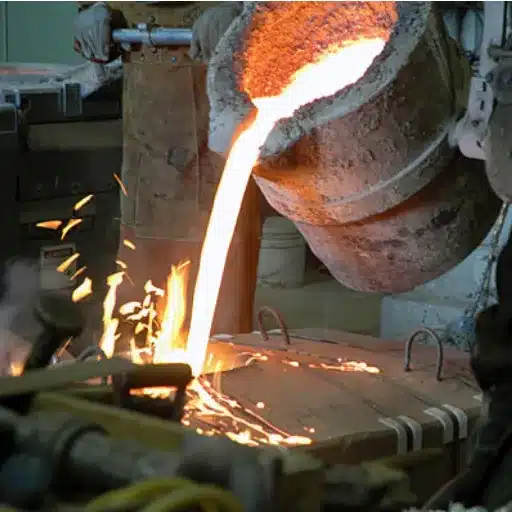Because of its resistance to corrosion and durability, stainless steel is a widely used industrial material. Steel grades ASTM 304 and ASTM 316 are two of the more prevalent and readily available types. Even though they may look the same at first glance, these two grades have different characteristics that distinguish one from another in practical applications. This article aims to discuss the important aspects of both grades of steel with respect to their differences and practical applications in order to aid informed decision-making while selecting the material.
What are the Main Differences Between 304 and 316 Stainless Steel?
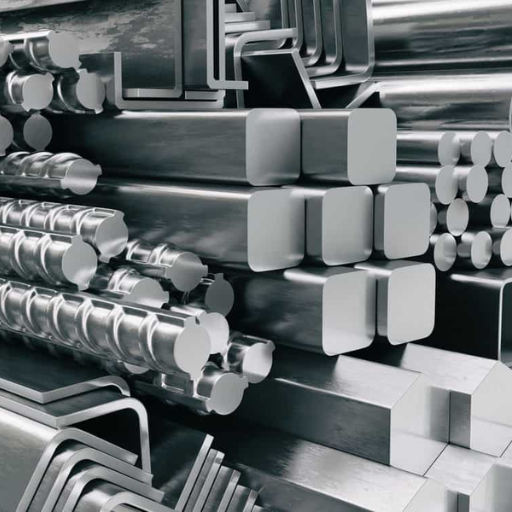
304 and 316 stainless steels differ in their chemical composition, along with the level of resistance they offer against corrosion. Both types of stainless steel are made of iron, chromium, and nickel, but 316 also includes molybdenum, which makes it more resistant to pitting and corrosion, particularly in chloride-rich settings such as chemical or marine industries. Because of this, 316 is better suited for extremely corrosive environments, while 304 is more economical and used for general-purpose applications that do not require extreme resistance to corrosion.
Understanding the Chemical Composition of 304 vs 316
I am frequently asked why one should choose 304 over 316 stainless steel or vice versa. From my point of view, the choice is highly dependent on the particular environment and application in question. If general corrosion resistance is important and cost-effectiveness is a priority, 304 is more than sufficient for a myriad of uses. However, for projects in more extreme conditions, such as in maritime or high chloride regions, 316 is definitely better because of the added molybdenum, which provides greater resistance to corrosion and pitting. Those who understand the chemical composition and environmental elements appropriately are able to make a more informed decision for sustained reliability and performance.
Exploring the Mechanical Properties of Both Grades
The mechanical properties of stainless steels 304 and 316 show that both grades exhibit high strength and durability, enabling their use in many structural and industrial applications. Grade 304 has good tensile strength, ductility, and workability, which makes it very versatile and commonly used. In comparison, grade 316 offers similar mechanical performance but excels in applications with demanding conditions for stress corrosion cracking and pitting. Both grades are dependable, however, 316’s resistance to more aggressive conditions makes it more desirable for harsh applications.
How Does the Addition of Molybdenum Affect 316?
The game-changing substitution of molybdenum into grade 316 stainless steel has drastically improved its corrosion resistance. This element makes the alloy outperform other steels in chloride-rich and strongly acidic environments, which is useful in marine, industrial, and chemical processing industries. Molybdenum increases resistance to pitting and crevice corrosion, offering superior performance to 304 stainless steel. This is precisely why I repeatedly opt for 316 in scenarios where toughness under harsh conditions is indispensable.
Why is Corrosion Resistance Important in Stainless Steels?
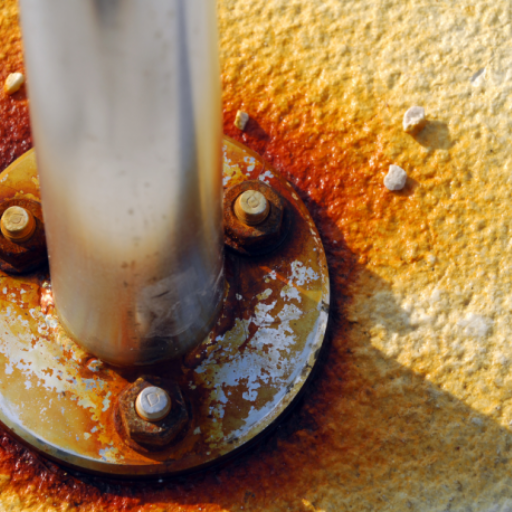
Because stainless steels undergo demanding usage, corrosion resistance is key since it affects service life, structural integrity, and maintenance expenditures. Stainless steels such as 316, which is one of the most frequently used steels, stand up to rust as well as deterioration for years enabling them to retain both their performance and appearance even when subjected to moisture, chemicals, and harsh conditions. This is what makes stainless steels indispensable in so many industries.
Comparing Corrosion Resistance in 304 and 316
As for the comparison of the corrosion resistance capability of 304 and 316 stainless steels, I can assure that 316 is much more protective in more extreme conditions. Even though both grades have oxidative and general corrosive resistance, 316 is more impressive because of its molybdenum content, which ensures greater protection against pitting and crevice corrosion in chloride-rich environments, like in marine applications. 304, on the other hand, is an excellent grade where there is low exposure to corrosive elements, which increases its versatility but lowers the expenses. The decision in choosing one over the other comes down to where the application is intended to be used and what specific conditions need to be maintained.
Effects of Chloride Environments on Each Grade
I have seen how chloride surroundings significantly affect 304 and 316 stainless steels, and their impact needs to be assessed carefully.
- 304 Stainless Steel: While 304 is a material that is considered highly versatile and widely used, it lacks performance in chloride-rich environments. 304 suffers from pitting and crevice corrosion when exposed to chlorides such as marine air or de-icing salts. This is because it lacks molybdenum, which would mitigate these forms of corrosion. 304 may perform adequately in low to moderate chloride concentration environments, but in high chloride exposure environments, I usually recommend alternatives such as 316.
- 316 Stainless Steel: Molybdenum’s addition in 316 makes it stand out in dealing with chlorides. This element makes it better in resisting pitting and crevice corrosion which makes it the preferred choice in harsh environments, such as marine applications or heavy salt exposure locations. I have seen it find use in coastal railing, boat fittings, and even chemical plants where high chloride exposure is expected.
In conclusion, with regards to chloride, determining the concentration and level of exposure is crucial. For lower exposure levels, 304 seems to work and may reduce spending. In the case of higher chloride concentration or critical applications, 316 is the correct and more dependable option. All cases require proper alignment of a material’s strengths to the unique requirements of the surroundings.
The Role of Chromium and Nickel in Corrosion Resistance
The role of chromium and nickel in stainless steels is critically important because these elements increase the corrosion resistance of the alloy. Chromium, or chrome, creates a passive oxide layer on the surface which protects the alloy from oxidative damage and further corrosion. Meanwhile, nickel works to increase an alloy’s toughness and its resistance to high temperature and acidic environments. These elements guarantee persistence and reliability under severe conditions, which is essential for stainless steel’s performance in demanding applications.
How Do the ASTM Standards Define 304 and 316?
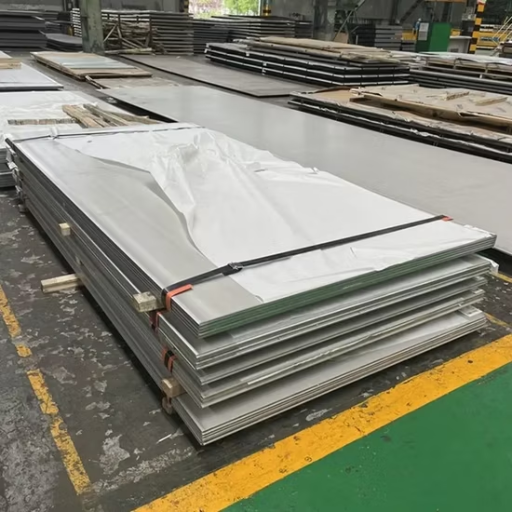
The ASTM standards consider type 304 and 316 stainless steel mostly from the perspective of their chemical composition and their functional characteristics. Type 304 stainless steel is an austenitic alloy with approximately 18% chromium and 8% nickel content and thus is quite versatile as it is corrosion-resistant in numerous environments. However, 316 stainless steel has additional molybdenum, which greatly improves its resistance to pitting and crevice corrosion, even more so in chloride-rich or marine environments. These distinctions make 304 suitable for general-purpose applications while 316 is more preferable for more demanding conditions where enhanced durability is essential.
Understanding ASTM Specifications for Stainless Steels
The ASTM specifications for stainless steels establish uniform criteria for the chemical makeup, mechanical characteristics, and relevant tests for distinct categories of stainless steel. These criteria guarantee uniformity, precision, and appropriateness of the materials for intended purposes. For example, common ASTM specifications such as ASTM A240 outline the standards for sheets and plates, while ASTM A276 pertains to bars and shapes. Knowledge of these specifications aids in the selection of the correct stainless steel grade for the desired outcome, enabling compliance with industry benchmarks and advanced performance standards.
Significance of Grade Stainless in Industry Standards
Stainless steel grades and marking their significance within industry standards are key for the successful execution of any project. Those who specialize in the field know that standards like ASTM provide critical frameworks that aid them in aligning material properties with application requirements. For example, appropriate grade selection ensures compliance with safety regulations, structural integrity, and corrosion resistance. This meticulous step saves time, reduces costs, and strengthens product reliability. Having this knowledge not only makes material selection easier but also makes clients trust the signatory, knowing they will deliver consistent and high-quality outcomes.
What Are the Typical Applications for Each Grade of Stainless Steel?
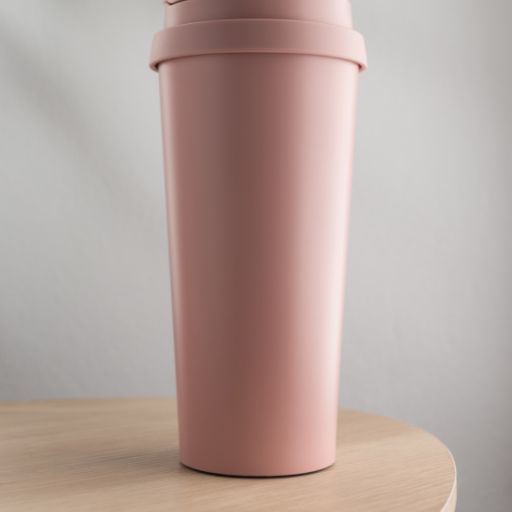
With regard to the stainless steel grades’ usual uses, I apply guiding principles based on the demands of the specific project. For example, grade 304 is indeed one of the most commonly used stainless steel grades due to its versatility. It can be found in kitchen appliances, chemical tanks, and even architectural trim because it resists rust and corrosion. Grade 316, which contains extra molybdenum, is also well-suited for marine applications or some medical devices that need stronger resistance to chlorides. Then again, grades such as 430 can be used for less demanding indoor decorative applications. In industrial applications like oil and gas, Grade 2205 duplex stainless steel is often used due to its greater strength and resistance to corrosion. Each grade has distinct characteristics, and only by knowing them can I am able to offer solutions that meet the desired level of performance and the environmental conditions.
Common Uses of Type 304 Stainless Steel
Type 304 stainless steel is one of the most commonly utilized grades because of its versatility, ease of use, and excellent properties. Further explained are some common applications of Type 304 stainless steel:
- Kitchen Equipment and Appliances
Sinks, stovetops and fridges: all of these are commonplace appliances that can be found in every household kitchen. Type 304 is known to be a very durable alloy and can effortlessly resist corrosion from acidic foods, water or steam. The non-reactive nature of its surface ensures that there will be zero contamination to food by Type 304 as well.
- Building and Construction
From floods during the rainy season to high humidity, this alloy can withstand any harsh weather conditions with no visible damage to its structural form. Because of these reasons, it is perfect for siding and decorative rails.
- Medical Instruments
Any kind of medical appliance and/or device becomes extremely hygienic through the use of Type 304. This is due to the alloy resisting the corrosion that comes from different sterilization techniques and also due to not having any ridges which could trap bacteria.
- Automotive and Aerospace Components
Type 304 is appropriate for use in automotive parts, as it is used in exhaust systems, trim, and various other interior components due to its beauty, strength, and resistance to corrosion. It is also employed in aerospace for parts that need to withstand changing weather conditions.
- Outdoor Furniture and Fixtures
Type 304 sustains its polish making it useful in outdoor settings. It explains its use in benches and railings, sculptures, and other pieces of such nature. It is known for its durability which keeps the items maintained and increases their longevity.
- Chemical and Food Processing Equipment
In addition to food processing, other industries such as beverage processing often depend on 304 stainless steel to manufacture tanks and pipelines along with production surfaces. These industries require such degree of resistance to most chemicals and cleanliness.
Every one of these applications is supported by Type 304 stainless steel’s specific performance attributes, including its chromium content (providing certain corrosion resistance), nickel content (improving resilience), and outstanding formability and weldability. With this information, I can accurately advocate for Type 304 in numerous situations where structural integrity, cleanliness, and resistance to chemical damage are of primary importance.
Where is Type 316 Stainless Steel Most Effective?
Type 316 stainless steel is best suited for regions with extreme corrosive exposure such as the ocean, chemical processing industries, and medical facilities. It’s ability to withstand pitting and crevice corrosion makes it useful for fabrications and parts in saltwater, acidic, or otherwise aggressive conditions. This is made possible because of its molybdenum content which is known for corrossive resistance.
Comparing Food Processing and Chemical Processing Applications
While both food processing and chemical processing applications, in my comparative view, require high performance of the materials used, the emphasis in both differs noticeably. In food processing, hygiene together with the prevention of any form of contamination takes priority, which explains why Type 316 stainless steel is particularly admired for its cleanliness and ability to withstand food corrosion and many cleaning chemicals. In comparison, more aggressive challenges are presented in chemical processing environments, such as exposure to extremely acidic or caustic materials. Here, the molybdenum content in Type 316 becomes important because it improves the strength and resistance to pitting. Even though both industries use the material’s resistance to corrosion as an advantage, the particular applications in each industry shift the focus differently—in food processing, it is safety and purity, while in chemical processing, it is chemical resistance and durability.
How Does the Price Difference Between 304 and 316 Affect Choice?
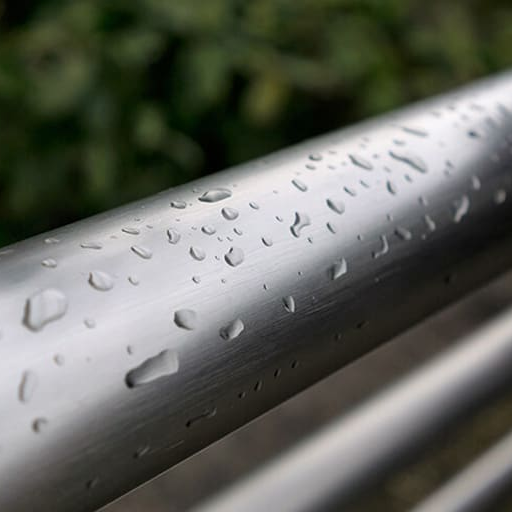
The price difference between the types of materials, in particular between 304 and 316 stainless steel, often impacts the selection of the material. 316 is more expensive due to its higher content of molybdenum, but its increased durability and resistance to corrosion make it the material of choice for harsh environments like chemical processing plants and marine settings. While 304 is much more cost-effective compared to 316, it is still perfectly suitable for less demanding applications. In a standard environment,s 3,04 performs excellently. In the end, the selection comes down to how much the buyer intends to spend and how long they require the material to last against possible corrosion.
Why 316 is More Expensive than 304
the more expensive a metal is, the more it is composed of higher-grade alloys and performs better in highly demanding conditions. The price difference between 316 and 304 stems from the fact that 316 has higher amounts of molybdenum, which improves its resistance to pitting and crevice corrosion, especially in chlorides. This further adds to its worth for marine structures and chemical processing equipment. While upfront investment on 316 is high, industries that have low tolerance for material failure find the investment worthwhile due to its long-term reliability and durability. Ultimately, the case boils down to what the application requirements are, along with what surrounding conditions exist.
Balancing Cost and Performance in Material Selection
Achieving the optimal balance between cost and performance in the selection of materials necessitates an understanding of the environment of operations, application requirements, and maintenance scopes. While primary cost is a determining factor, material selection that enhances service life and resistance to environmental challenges is bound to save lifecycle costs and avert failures. Industries need to evaluate the mechanics of the materials, withstand corrosion, and estimate the service life to optimize performance and cost.
Reference
- 304 vs 316 Stainless Steel – What’s the Difference?
- Difference Between Stainless Steel 316 and 304
- 304 vs 316 Stainless Steel: What You Need to Know
Frequently Asked Questions (FAQs)
Q: What is the main difference between ASTM 304 and ASTM 316 stainless steel?
A: The main difference lies in their chemical composition; 316 stainless steel contains molybdenum while 304 does not. This addition provides 316 stainless steel with enhanced strength and corrosion resistance, particularly against chlorides and other industrial solvents, compared to 304.
Q: How do the properties of 304 and 316 stainless steel compare?
A: Both 304 and 316 are austenitic stainless steels, meaning they have similar mechanical properties as 304 stainless steel, including toughness and formability. However, 316 stainless steel offers better resistance to pitting and crevice corrosion in chloride environments.
Q: Why is 316 stainless steel more expensive than 304 stainless steel?
A: 316 stainless steel is more expensive due to the addition of molybdenum and a higher nickel content, which enhance its corrosion resistance and mechanical properties, making it suitable for harsher environments.
Q: When should I choose 304 stainless steel over 316?
A: Choose 304 stainless steel for applications where the environment is not particularly aggressive and cost is a significant factor. It is ideal for indoor applications and situations where the material is not exposed to harsh chemicals.
Q: What are the applications of 316 stainless steel?
A: 316 stainless steel is commonly used in marine environments, chemical processing, and medical devices due to its superior corrosion resistance. It is also used in the manufacturing of stainless steel pipes and tanks, where high-grade stainless steels are required.
Q: Can 304 and 316 stainless steel be welded easily?
A: Yes, both 304 and 316 are austenitic stainless steels and can be welded using common welding techniques. However, to prevent corrosion at welded joints, using a low-carbon version like 304L or 316L stainless steel is recommended.
Q: How does the yield strength of 304 compare to 316?
A: The yield strength of both 304 and 316 stainless steel is similar, but the presence of molybdenum in 316 provides slightly enhanced mechanical properties under certain conditions, particularly high-temperature environments.
Q: What is the significance of the chromium and nickel content in these stainless steels?
A: Chromium provides corrosion resistance while nickel enhances ductility and toughness. Both 304 and 316 have a chromium content of about 18% and a nickel content of about 8%, which is why they are often referred to as 18/8 stainless steels.
Q: Are there any alternatives to 304 and 316 stainless steel for cost-sensitive projects?
A: In cost-sensitive projects, one might consider other stainless steel grades or even carbon steel if corrosion resistance is not a primary concern. However, these materials may not offer the same strength and corrosion resistance as 304 or 316.

